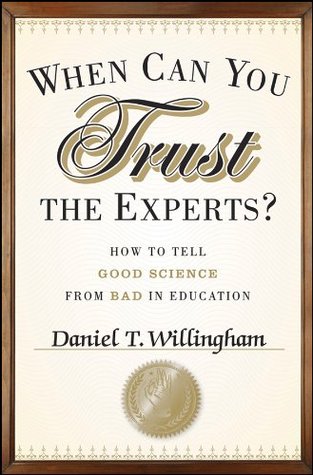More on this book
Kindle Notes & Highlights
Read between
September 3 - September 6, 2022
But unfounded beliefs related to schooling are of greater concern. The costs in time and money can be substantial; worse, faulty beliefs about learning can potentially cost kids their education.
If the learning styles theory is true, people who experienced the story in their preferred way ought to remember it better. Experiments like this have been conducted, and there is no support for the learning styles idea.7 Not for visual, auditory, or kinesthetic learners, nor for linear or holistic learners, nor for any of the other learners described by learning styles theories.
It’s illegal to say that a medicine has been scientifically tested if it has not. Education has no such constraints.
I will argue that your experience does count: if the claims about an education product fly in the face of what you know to be true, there is a problem.
In general, source information (where and when we heard something, and who told us) is more fragile than content information (what we heard).
(My colleague David Daniel notes that it’s easy to separate bona fide scientists who seek to apply research to K–12 education from charlatans: charlatans are more attractive and have beautifully coiffed hair. Being bald myself, I thought this comment showed great insight.)
An enormous amount of research shows that we are biased to conclude that new evidence supports what we already believe.
People’s values shape their beliefs about scientific matters, such as the relative contribution of genes and environment to intelligence. They then interpret data to confirm those beliefs.
To protect ourselves from believing false things, we need to (1) be aware of the peripheral cues that persuade, so that we can discount them, and (2) be aware of the beliefs we now hold, because they will bias how we evaluate new information.
Everyone can improve at any skill he or she works at. But it does take work, not the simple turning of a key in a lock.
The core of cognitive dissonance theory is that people find it uncomfortable to hold two conflicting thoughts in mind at once. This discomfort motivates people to change one of the thoughts.
Both factual knowledge and thinking skills are essential for students to be able to solve meaningful problems. Imparting both to students is difficult, there is no doubt. Unfortunately, we keep taking on this problem in the same ineffectual way. We address half of it, later despair of the other half, and then ignore what we were getting right in our rush to correct what was undone. Put this baldly, it seems incredible. Yet that has been the pattern.
Most of the time, these difficulties are ignored, and people try to get the benefit of the cloak of science on the cheap.
The implications for education of a scientific fact depend on the goals of schooling.
To get started in your evaluation, you need to be very clear on three points: (1) precisely what Change is being suggested; (2) precisely what outcome is promised as a consequence of that Change; and (3) the probability that the promised outcome will actually happen if you undertake the Change.
Researchers—especially those who are also college professors—frequently maintain personal Web sites from which you can download articles they have written. If not, you will likely find his or her e-mail address, and you can request a copy. This is not unusual or impolite. Researchers are used to it. And if there is more than one author listed, you can write to any of them.


